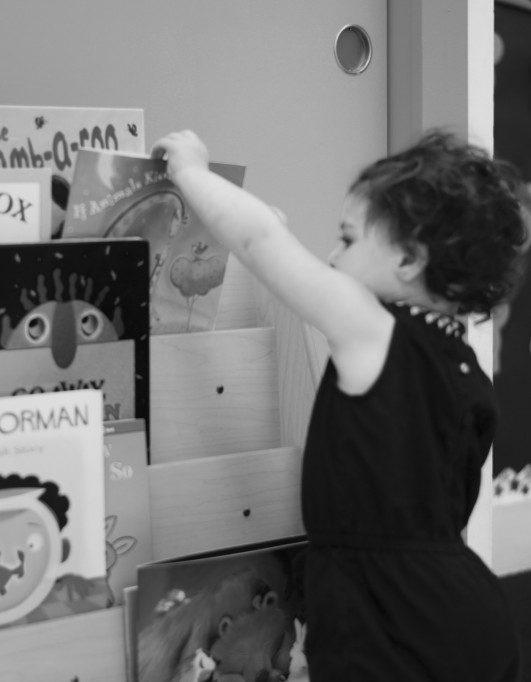Reading Non-Fiction with Preschoolers Part I

SHARED by: Katherine Grier, Librarian at York Avenue Preschool
At York Avenue Preschool we do a nonfiction library session with our Pre-K students once a week. I start by showing them books which illustrate the difference between make believe and fact. For example, I might show them an Olivia book by Ian Falconer and a farm book about baby pigs. We discuss how Olivia talks, wears clothes and goes to school and how this does not happen on a real farm where pigs roll in the mud and eat slop. The children really grasp these concepts quite quickly and since they generally are sponges that are open to absorbing everything, they soon grow to enjoy nonfiction. Twos, threes and younger fours’ preschoolers also can benefit from exploring nonfiction.
Here are some tips for selecting good nonfiction books the next time you visit your library or bookstore:
- Look for books with clear, large photographs or concrete illustrations, preferably one or two at most per page. They help the child focus on critical aspects of the images and inspire them to think deeply about them.
- Look for books with focused text. Just because a book is nonfiction doesn’t mean it can’t tell a story. The problem with a lot of nonfiction aimed at children is that it tries to tell everything there is to know about a subject all in one book. Not only does this cause information overload for the child, but it also results in a potentially boring book with a lot of unconnected facts
- Choose topics that your child is familiar with or that he/she has expressed particular interest in, such as food, families, sea creatures, transportation, dinosaurs, body parts and senses, pets, or bugs. Simple science concepts such as light and dark, float and sink, solid and liquid also are comprehensible to this age group. Outer space and weather-related topics are ones that preschoolers generally enjoy.
- Be sure to preview all content, and edit where necessary when you read aloud. You should think about your child’s sensitivities and what he/she can handle when choosing a topic. For example, animal books are logical choices, but they can often contain information about the food chain or how an animal is born. Along the same lines, you should think about what you are willing to discuss and when. Nonfiction books will surely raise questions for curious kids, and bedtime may not be the best time to explore these types of books.
The most important thing is to spend quality time with your child while you read together. Find books that interest them on topics they enjoy!









